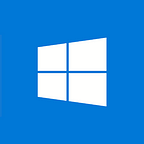A Different Kind of Reality
HoloLens Game Development with Kenny Wang
What if you could play Portal using the dimensions of your office or home? What if Portal’s “Companion Cube” could roll down the actual stairs in your house?
Toronto game developer Kenny Wang wondered the same thing. So, the 23-year old created a mixed-reality demo (or “mod”) of the popular game using the mixed reality capabilities of HoloLens.
He released the demo in February, and people have been gushing about it ever since. The idea for the concept game “just popped into his head,” he said. It took about three weeks “on and off” to execute the HoloLens demo.
“I love the new trends in gaming,” Kenny said. “The concept of holograms and iterating virtual elements into the real world — it’s like a step into the future.”
“It’s simple in terms of mechanics,” he added, “but it’s a great way to show off the potential of mixed reality because it uses real physics.”
The Portal mod isn’t the only HoloLens demo he’s created. In November 2016, he and a friend, 3D animator Joshua Lew, put together Pokelens — a voice-automated demo based on Pokemon Go, the break-out game of 2016.
“We saw the commercials about Pokemon Go and they didn’t actually do what it promised,” Joshua said. “So, we thought we could do actual Pokemon battles.”
Kenny agreed, saying, “I wanted to take a childhood game and bring it into the real world using gesture input and voice commands. We really wanted to make something that could represent the real game.”
Gamers sat up and took notice (the Hololens demo is available on Github), and GamesRader.com praised the mod, calling it “Pokemon Go on steroids.”
Early interest in gaming
Kenny has been a gaming enthusiast pretty much his whole life.
When he was in grade school, his dad, a robotics engineer, brought home his first gaming console. It was the PlayStation One, and Kenny was hooked. After exhausting the PS1’s demo disc of games (“there was snowboarding, tennis, shooters”), some of his favorite PS1 games included the “Spyro” series and “Crash Bandicoot.”
Not surprisingly, Kenny got interested in creating games soon after. He began by modifying them, creating new content for popular games such as Halo. At about 15, he delved into programming via Microsoft’s XNA Studio, a freeware set of game tools. While the XNA tutorials were “pretty intuitive,” it took time to really understand them.
“I didn’t know a thing about programming, so I went through the tutorials like ten times,” Kenny said. “I tried to memorize some of the coding, and eventually, I started to change the lines of code.”
After high school, he was accepted into the University of Ontario Institute of Technology. He wanted to enter the university’s game development and entrepreneurship program. But UOIT cast a gimlet eye on his less-than-stellar grades and put him on its programming track instead.
“That’s kind of a funny story,” he said. “So, I got my grades up and was able to enter the game dev program the next year.”
The program gave him a solid foundation to be a good game developer, said Kenny, who graduated in 2016 with a bachelor’s degree in information technology. His work has been getting the attention of major companies within the industry, and he feels good about soon securing a job that will bring his passion for mixed reality to a wider public.
Kenny sees games as a way of telling stories and entering other worlds — much like novels, movies, or paintings do.
“They’re not just games to me, but experiences,” he said. “I’ve always had the mindset of creating things, and game development is unique.”
“It gives me the tools to show other people a different kind of reality.”
Do you have a story or know someone passionate about Windows development like Kenny? Reach out on Twitter and we might feature you in our next blog!
